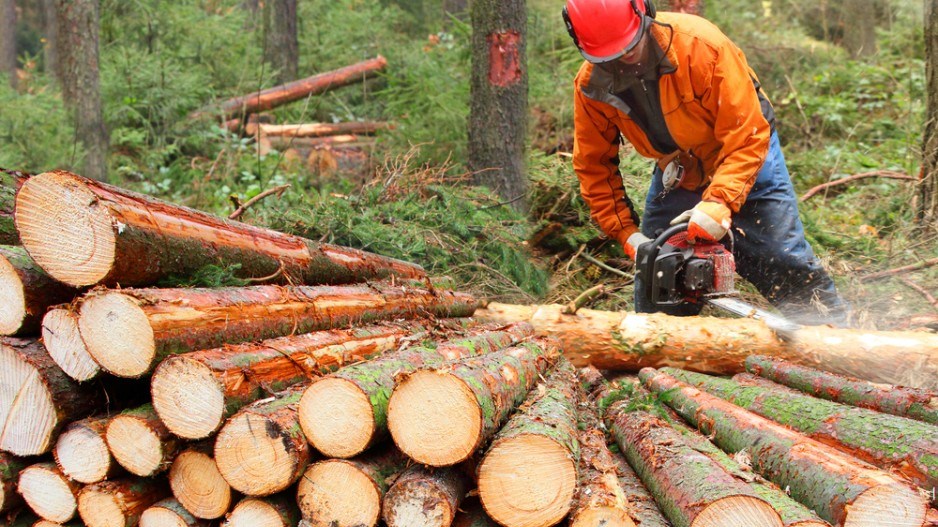In light of the global stock market turmoil, the deep dive of the Canadian dollar and the ongoing commodities sell-off, what is the outlook for B.C.’s forest sector?
On fundamentals, softwood lumber prices – in U.S. dollars – should not be as low as they are today. B.C.’s northern kraft pulp prices are weak because substantial new capacity, notably Southern Hemisphere short-fibred pulps, is coming on stream; oriented strand board is early in its recovery phase.
Overall, this is not a recipe for disaster. Yet today’s steep price discounts for forest products stocks suggest other factors are at work.
On the positive side of the ledger, the plunge in global oil prices, dragging the Canadian dollar below US$0.70, has again created a huge currency-driven benefit for all Canadian exporters. Add in last October’s expiry of the Canada-U.S. Softwood Lumber Agreement (SLA) and the result is very competitive Canadian lumber being sold tariff-free (for the next nine months anyway) into the U.S. market.
Another positive factor is what has been the glacial but sustainable improvement in U.S. lumber consumption. Analysts expect that the slowly improving housing market will yield a 35% increase in U.S. demand over the next five years.
What’s worrying investors is concern about the “lumber supercycle” – the prospect of which, not long ago, helped drive stock prices to bull-market highs. The China market has lost some of its former lustre. For the past decade, it has been the darling of the global forest industry. At its peak, it effectively made up more than 20% of the U.S. lumber demand shortfall, when North American log exports to China are included.
Today China is morphing into an enigma. There’s not just uncertainty; exporters and investors are beginning to fear the worst.
What they should remember is that, even with much lower GDP growth rates, China and other Asian emerging markets in aggregate provide a sustainable boost to global lumber, logs and pulp demand – which, with the exception of Japan, historically didn’t exist.
The European industry would love to have North America’s trade position, but domestic demand and Middle East-North African export prospects are fading rapidly, reflecting slowing GDP growth and geopolitical factors.
Strip away legitimate worries about B.C.’s timber decline and rising wood costs. Accept the likelihood that the much-weakened American lumber coalition will be looking for blood in a new SLA deal. Yes, Russia almost certainly will command a significant future market share in Asia’s timber deficit markets. That’s normal business.
Smart companies have spent much of the past 10 years positioning themselves for these developments.
The strategic fundamentals are that North America’s need for wood products, and emerging Asian markets’ need for imported pulps, are significant positives for B.C. Strong demographics and long-term sustainable consumption growth in these markets support a healthy B.C. forest sector.
It’s true that global over-production of forest products is a short-term damper. Capacity use levels at most mills are well below levels required for product prices to sizzle. As a result, expectations for the long-awaited lumber supercycle have been deferred.
North America’s forest products sector is being swept along in the general malaise of the current bear market. This psychology results in negative factors appearing much more significant than they are.
Analysts correctly advise major institutional investors that today’s low forest product prices are not representative of higher levels, which will be driven by well-documented global timber and sawlog supply limitations.
Yet the fear factor is keeping cash-rich investors in the trenches. For the short term, they might not be wrong.
The lumber supercycle may be deferred, but strategic fundamentals indicate it is alive and well.
Fear is a poor substitute for sound and bold investment.
Of course, as always, it’s a question of timing.•
Peter Woodbridge (www.woodbridgeassociates.com) is president of global forest products research and consulting firm Woodbridge Associates Inc.




